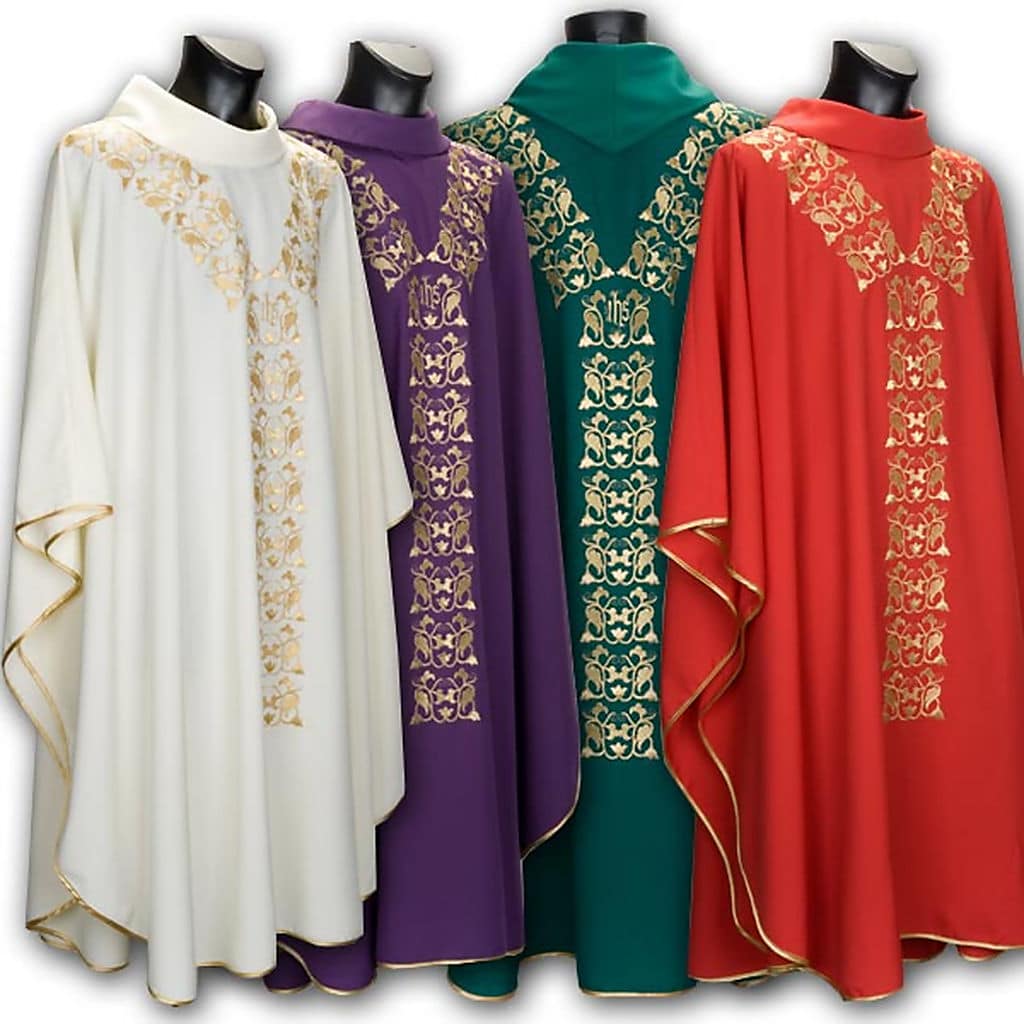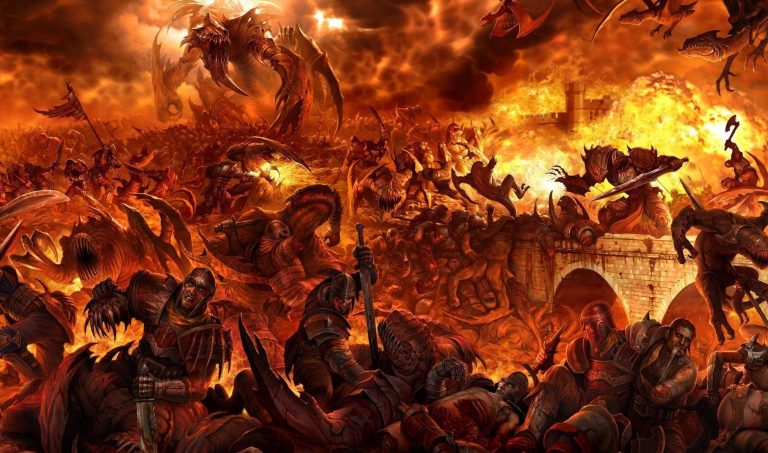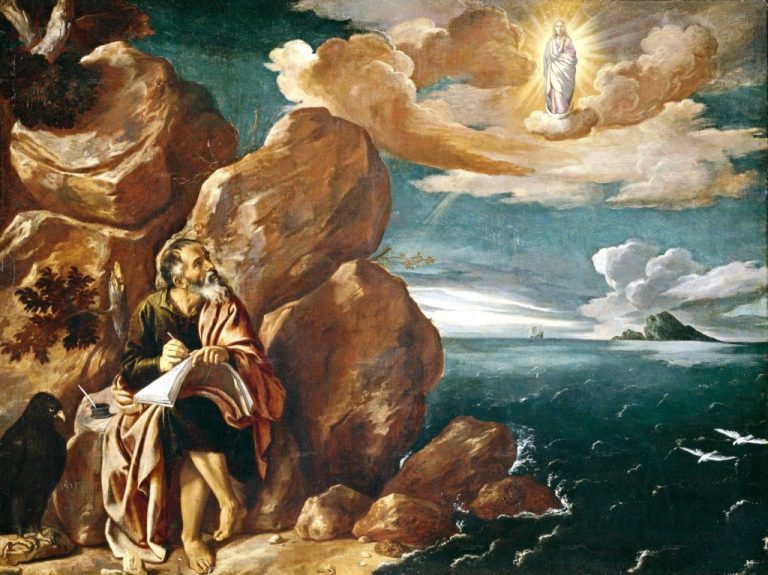When are they used? Liturgical Colors and their Meaning
It is customary to see in the Catholic Church the clothing worn by the Priest who gives it, and we see it change color in different periods of time. Here we will show the reader when are they used? liturgical colors and their meaning.
What do the Liturgical Colors mean and when are they used?
Many people sometimes wonder what is the reason that the Priest who officiates the mass in the Catholic Church, changes his sacred vestments at different times and special situations.
These colors effectively express the different mysteries of the Faith of the believers, as well as the progressiveness of the life of the Christian during the liturgical year. Christians pray in relation to the liturgical colors of the vestments.
We must have this variety in the colors of the sacred garments embodied in our hearts. Likewise, these colors of the vestments of the priest of the Church, specify the type of celebration of the Liturgy.
some interesting references
Before going on to describe the liturgical colors and their meanings of the sacred vestments of the priest in the mass, we are going to develop the theme in terms of the Roman liturgy, to make the reader aware of it, although very briefly.
Liturgy of the Roman rite
The signs of the missal of Rome which are remembered within the motu proprio Rubricarum instructum of John XXIII, indicate which are the liturgical colors and dresses that are used in the Liturgy of the Latin rite.
This dress of both the ministers and the celebrant of the mass, as well as the vestments of the altar must be according to the Office or Mass of the day to be celebrated, according to the Church of Rome.
The Roman Church customarily uses five colors, which are: white, green, red, black and purple. However, in terms of legitimate customs, other liturgical colors are used.
It may happen that if at a certain time and place, and according to tradition, the meaning of one color or another of the Roman Church collides with the congenital meaning of those regions or places, the change of said color is granted to the Episcopal Congress of the place. for a more appropriate one, this will not be executed until consulting with the Congregation of Rites.
Do you know what liturgical colors mean?
Without a doubt, at some point we have seen that the priest dresses in different colors during the celebration of mass, below we will describe the reason for each color and for what time it is used exactly.
Blanco
It is used at Easter time, at the time of the nativity or Christmas, at the feasts of Jesus, the Virgin Mary, the angels, and non-martyr saints. This represents the color of Easter joy, light and life. It is also an expression of joy and purity, joy and peace.
This color is a representation of God himself. It is also used in festivals related to the Passion (Christ the King, the Ascension and the Sacred Heart of Jesus). It is also used in Corpus Christi, Mass of the Lord’s Supper, during the celebration of all Saints.
Festivities of San Juan, Conversion of San Pablo. It is used during the celebration of baptism and marriage. As we said before, it is used in celebrations for saints who did not die martyrs such as Saint John, Saint Joseph.
Rojo
It symbolizes the blood and strength of the Holy Spirit. It is used on Palm Sunday and Good Friday, the feasts of the Holy Spirit, Pentecost Sunday, Confirmations, feasts of Evangelists and Apostles, funerals of cardinals or the Supreme Pontiff. Feasts of apostles and martyrs.
It means the gift of the Holy Spirit through which we can bear witness to our own Faith to the point of shedding blood in martyrdom. It represents the color of fire and blood.
Verde
It represents the virtue of hope. Used in ordinary time that is from the Baptism of Jesus, Lent, Pentecost and Advent. After the Easter season until Advent. It represents the time of hope for the arrival of the Messiah and the resurrection of salvation.
Indicates youth of the Church by the resurgence of a new life. It is used in offices and masses of annual cycles.
Purple
It is used during Advent, Lent, times before Christmas and Easter of the Lord. It is also used in times of petition, also on Monday, Tuesday and Holy Wednesday, it is customary in the solemnity of the Nazarene of San Pablo in Holy Week.
It symbolizes hope, the need to meet Jesus, the liturgy of the dead. It is a sign of penance and austerity.
Dorado or Plateado
It is used in important celebrations during the year: Christmas masses, Easter Vigil on Easter Sunday, Resurrection, celebration of Christ the King. It represents the great festivities.
Rosa
It indicates closeness of Christmas and Easter of the Lord Jesus Christ. Used on the third and fourth Sunday of Advent. It is a symbol of joy, but of a brief or momentary joy for time.
Azul
It symbolizes virginity and purity, this is both in Spain and Hispanic countries. Used on the feast of the Immaculate Conception, Marian feasts when the Episcopal Conference admits it.
Negro
It characterizes mourning for the deceased, which is why it is used during funerals and funerals. Also used in Requiem Masses or for the dead as well as Good Friday according to the ordinary Roman rite. Regarding American and European Catholic traditions. Also used for the commemoration of the Blessed Virgin on September 15.
All these colors must also be marked in our hearts
For the Christian or Catholic believer, these colors must instill in us respect for what they mean and the different times that determine them, we must have them embodied in our hearts with fervor, deep love.
We must also take into account some important practices at all times and in our Catholic Christian life, and take it with great sincerity and respect for the customs that they represent, which we can summarize as follows:
Let us get used to living with white garments of purity, innocence throughout our spiritual and earthly lives. Recover purity in our holy life.
We must live with the red garments representative of the fervent love for Christ, and have the will, if necessary, to give even our own lives for Jesus Christ himself, following the example of the martyrs.
Living with the green color of theological hope, in these moments and in all the situations of our daily life when we go through so many hard and difficult situations, but having the certainty that we have the strength of God and keeping our eyes always towards the eternity.
Let us put on the purple or violet dress, for penance, to practice humility with our neighbor as Jesus himself teaches us in his word, modesty must be the constant food of our Christian life.
Let’s live with the pink dress, only from time to time, since life shows us that all human joy is temporary and ephemeral.
Let us put into practice living with the blue dress always raising our eyes to the sky, at all times and fully trusting that gaze towards eternity so that we always have confidence in our Father God. So be it.
We hope with these brief explanations that we have made it clear to the practitioner about the liturgical colors used in the different festivities of the Catholic Church and that they may have full knowledge of it.







